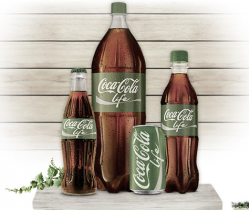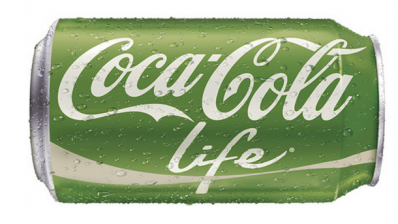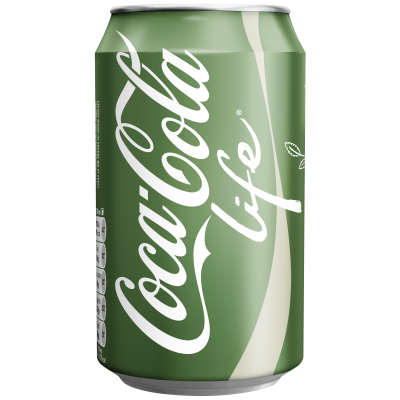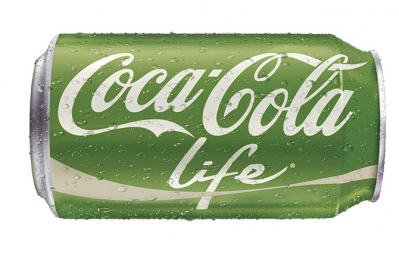Coca-Cola Life? Well, Death doesn’t have quite the same ring…

As significant beverage launches go, the Coca-Cola Life launch featured little fanfare. Compare it to the 2012 US introduction of mid-calorie rival Pepsi NEXT, which saw glitzy launch parties in cities like New York and celebs pouting for paparazzi with cans.
Which makes you think that perhaps Coke is using Argentina – a market where there is clearly a niche for a green (quite literally) cola (given that obesity is clearly a live issue; 18% of the population were obese in 2011) to test the fizzy waters.
“Stevia…has been used for centuries in South America and in Asia for decades to naturally sweeten foods and beverages…Coca-Cola Life uses the natural sweetener 200-300 times sweeter than sugar,” the Coca-Cola Life website tells Argentinian consumers, who are no doubt aware of stevia’s origins.
Here is a better-for-you product (half the calories of regular Coke) that also uses better-for-the-earth packaging to compound its health halo effect, with the implied message: ‘good for you and good for the planet’.
Plant-based sweetener, plant-based bottle
Not only do I consume fewer calories to the benefit of my health, I also reap a feel-good factor in knowing that the bottle I am drinking from is a Plant Bottle, made of 30% plant-based PET.
Around 8% of Coca-Cola's PET bottles worldwide in 2012 were Plant Bottles; these use a PET resin containing bio-based monoethylene glycol.
Coke aims to introduce an entirely plant-based bottle within the next few years, but it’s fair to say that, for now, the use of such bottles is still strategic, tied to certain brands targeting specific consumers.
Take Coca-Cola Life – ‘Coca-Cola Death’ doesn’t quite have the same ring, does it, beyond perhaps fans of heavy metal? – which is not (it seems to me) being positioned as a mass brand like Coke Zero.
‘Life’ implies added value (there is perhaps the risk that ‘non-Coke Life’, or red, full-sugar Coke suggests the opposite?) that consumers will add value to in turn, perhaps by paying Coke a little more; although Coke now uses 30% stevia in regular Sprite in France, presumably for no extra cost.
Testing ‘better-for-you’ brand value
The Coca-Cola Life launch site is replete with hessian satchel-wielding, sandal-slappin' 20 to 30-somethings floating around in winsome white cotton dresses, while a video (you can watch it below) sees a troop of late teens steal chaste kisses to the tune of Kiss Me by Christian pop/rock outfit Sixpence None the Richer.
The core target market seems young (18-35s), fairly affluent, well-educated, health-conscious, family-oriented, the sort of consumer who has steered away from full-sugar soda on health grounds.
Given concerns over obesity levels throughout South America, perhaps Coca-Cola believes the time is ripe to found a cult following and test demand for a green, better-for-you cola brand, the formulation for which can be updated or tweaked if and when it hits stores in the US or elsewhere.
Which brings us onto PepsiCo CEO Indra Nooyi’s comments in May – truth or bluff? – that “stevia, unfortunately, does not work well with colas”.
Perhaps this is too simplistic, when we consider Coke’s recent stevia patent filings, its five-year tie-up with stevia supplier Pure Circle, and the latter’s move from Rebaudioside A to ‘Stevia 3.0’.
‘Stevia isn’t necessarily a cola stopgap’: Laura Jones, Mintel
And given that prices for stevia are falling all the time, as economies of scale grow, would brands be that keen to switch to other ‘natural’ high intensity sweeteners en masse? Taking monk fruit and monatin alone: the former is twice the price of stevia, the latter lacks GRAS status in the US.
Mintel global food science analyst Laura Jones told BeverageDaily.com that, because of stevia’s bitter taste profile (and this is true, at least, in the high-intensity sweetener’s early incarnations), “probably meant it didn’t work as well with Coke, as potentially the liquorice notes get highlighted, whereas stevia compliments fruit and mint flavors better”.
She added: “Therefore more work was required to preserve the well-recognised cola flavour. Stevia's bitter taste also means that it is increasingly being used as part of a blend rather than a standalone sweetener in an attempt to mask its taste.”
Jones adds that she agreed with David Turner – whom we quoted yesterday – and said that “stevia isn't necessarily a stopgap measure in cola drinks, but of course if more effective natural solutions become available it would most likely be substituted”.
“But for now formulating with stevia is the most effective way to bring the calorie content of carbonated drinks down naturally,” she said.









